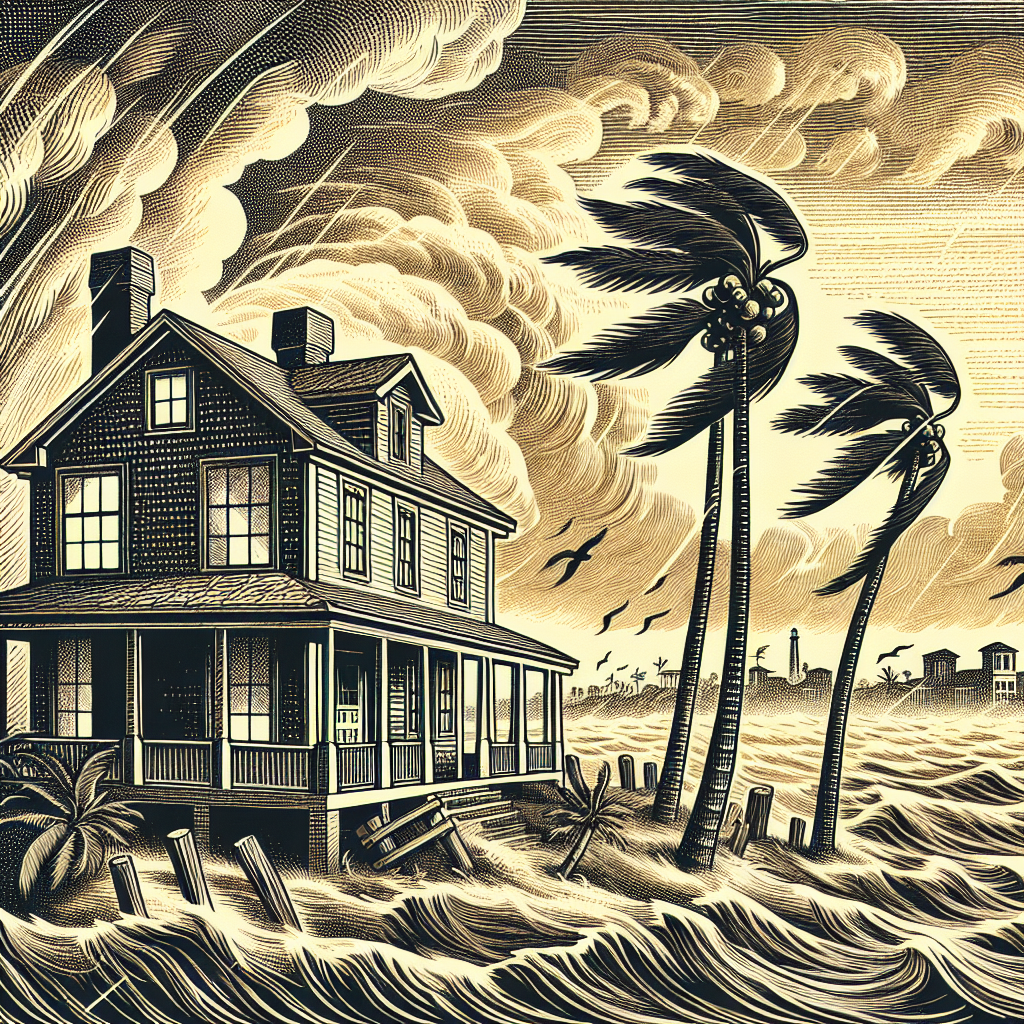Filed under Home Insurance on
Minimum Home Insurance Coverage Texas: What to Know

What “minimum” really means for Texas homeowners
When people search for Minimum Home Insurance Coverage Texas, they’re usually trying to figure out the least they can carry without taking on too much risk. Here’s the truth: Texas does not have a state-mandated minimum for homeowners insurance. If you have a mortgage, though, your lender will require coverage to protect the home that secures the loan. Even if you own your home outright, going too lean can create serious financial exposure in a state known for wind, hail, freeze events, and water damage.
Think of “minimum” in two layers. First, there’s the practical minimum your lender or HOA may demand. Second, there’s the smart minimum that keeps a disaster from turning into a financial crisis. This guide walks through both, with Texas-specific details you won’t want to miss.
Texas basics: No legal minimum, but lenders set the floor
Texas law doesn’t require homeowners insurance, according to the Texas Department of Insurance. But if a bank or mortgage company is involved, it will spell out minimums in your loan documents. These requirements typically include:
- Dwelling coverage sufficient to repair or rebuild the home after a covered loss (not based on your purchase price, but on reconstruction cost).
- Hazard coverage that includes wind and hail; in designated coastal counties, separate windstorm coverage may be required through the Texas Windstorm Insurance Association (TWIA) if your carrier won’t provide it.
- Flood insurance if the property lies in a high-risk FEMA flood zone.
- Deductible limitations (some lenders cap percent deductibles) and your lender listed as a mortgagee on the policy.
To be clear, the lender’s minimum is about protecting the collateral, not necessarily your total financial exposure. That’s why the phrase Minimum Home Insurance Coverage Texas can be misleading. You want coverage that protects your investment, your belongings, and your liability—without overpaying.
Know the core coverages on a Texas homeowners policy
Most Texas homeowners carry an HO-3 or similar policy form. The following components make up your protection:
Dwelling (Coverage A)
Pays to repair or rebuild your home after a covered loss. Set this limit to the home’s replacement cost—the estimated cost to reconstruct with similar materials and labor in your area. Market price or tax assessed value are not reliable proxies for this figure.
Other Structures (Coverage B)
Usually 10 percent of Coverage A for structures not attached to the home—fences, detached garages, sheds. You can raise this if you have substantial outbuildings.
Personal Property (Coverage C)
Typically 50–70 percent of Coverage A by default. You can select a different amount. Consider a replacement cost endorsement so your belongings are covered at new-for-old value instead of depreciated value (actual cash value).
Loss of Use (Coverage D)
Funds temporary living expenses if a covered claim makes your home uninhabitable. Often 20–30 percent of Coverage A. In large Texas events like hurricane or freeze-related losses, this component can be essential.
Personal Liability (Coverage E)
Covers bodily injury and property damage you’re legally responsible for, on and off premises. Standard options range from $100,000 to $500,000. Consider higher limits if you have assets, a pool, trampoline, dogs, or host frequently.
Medical Payments to Others (Coverage F)
Pays small medical bills for guests injured on your property, regardless of fault. Limits usually range from $1,000 to $5,000.
Endorsements and exclusions matter in Texas. Review roof coverage (actual cash value vs. replacement cost), cosmetic roof exclusions, wind/hail deductibles, and water-related limitations. The Insurance Information Institute and TDI both emphasize knowing what your policy includes—and what it doesn’t.
How much coverage do you actually need?
Use a replacement cost estimator (your agent or insurer will have one) to estimate Coverage A. Then round up to account for inflation, supply chain strains, and post-catastrophe labor costs. Recent years have seen contractor and material price swings after Gulf storms and statewide freeze events.
Consider adding:
- Extended replacement cost (often 25–50 percent extra over Coverage A).
- Ordinance or Law coverage (10–25 percent) to cover code upgrades during reconstruction.
- Replacement cost on personal property, not actual cash value.
As you evaluate Minimum Home Insurance Coverage Texas thresholds, align limits with real-world costs. A roof that cost $12,000 five years ago may be significantly more today. Don’t forget outbuildings, fencing, and special features like solar arrays.
Texas perils and deductibles: What’s unique
Texas sees more hail claims than most states, plus windstorms, tornadoes, wildfires, and occasional deep freezes. Insurers manage that risk with deductibles and sublimits. Expect:
- Percent-based wind/hail deductibles, commonly 1–2 percent of Coverage A, sometimes higher near the coast.
- Separate named-storm or hurricane deductibles in coastal areas.
- Higher deductibles translate to lower premiums, but be sure you can afford the out-of-pocket cost.
Water damage is complex. Sudden and accidental discharge (like a burst pipe) is often covered, but groundwater intrusion and seepage typically are not. Backups are excluded unless you add a water/sewer backup endorsement. Foundation coverage for settling or cracking is limited; however, some Texas insurers offer endorsements that help if a plumbing leak damages the foundation. Read your declarations and endorsements carefully and ask about foundation, water backup, and service line options.
Coastal and flood considerations
Along the Texas Gulf Coast, many insurers exclude wind. In that case, TWIA may be your windstorm and hail option if your home meets building code and is certified. Lenders commonly require this coverage when wind is excluded on the main policy.
Flood is a separate policy, typically through the National Flood Insurance Program or private flood insurers. Standard home policies don’t cover flood. With flood mapping updates and rapid urban development, properties outside high-risk zones experience flooding more than many expect. Given that Minimum Home Insurance Coverage Texas doesn’t include flood by default, evaluate your flood risk using FEMA resources and local historical data.
Liability: Don’t understate your risk
Texas liability claims can be expensive. If someone is injured at your home or you cause accidental damage away from home, liability coverage kicks in. Consider at least $300,000–$500,000 in personal liability, and look at a personal umbrella policy for an additional $1 million or more if you have substantial assets, a teen driver, a pool, or short-term rental exposure. Also review dog liability rules—some carriers restrict certain breeds or require prior-incident disclosures.
Endorsements that often make sense in Texas
- Water backup: Covers damage from a backed-up drain or sump pump failure.
- Foundation water damage: Helps when a covered plumbing leak damages the slab or foundation.
- Service line: Pays to repair underground lines (water, sewer, electric) from your house to the street.
- Equipment breakdown: Covers sudden mechanical or electrical failure of home systems and appliances.
- Roof replacement cost: Preserves full replacement on eligible roofs; many carriers default to actual cash value on older roofs.
- Scheduled personal property: Raises limits for jewelry, firearms, fine art, and collectibles beyond standard sublimits.
What drives cost in Texas
Insurers price risk at the address level. Expect premiums to vary based on:
- Roof age and material (impact-resistant shingles can help).
- Home age, wiring, plumbing, and updates.
- Location risk factors: distance to coast, hail alley, wildfire interface zones, proximity to a fire station or hydrant.
- Deductibles (percent vs. flat) and whether you have separate wind/hail deductibles.
- Claims history for you and your address.
- Credit-based insurance score (Texas allows its use with consumer protections).
- Protective devices: monitored alarms, leak sensors, automatic water shutoff valves.
Recent industry trends include reinsurance cost increases and more frequent severe-weather losses. Many carriers are tightening underwriting on roofs and older homes, adjusting deductibles, and using actual cash value for older roofs to manage hail exposure.
How to choose the right limits step by step
- Confirm lender or HOA minimums, including any deductible caps and wind/flood requirements.
- Calculate replacement cost using an estimator and local builder input; set Coverage A at or above that number.
- Align Coverage C with what it would cost to replace your belongings; add replacement cost for contents.
- Set Loss of Use to at least 20–30 percent of Coverage A to cover months of temporary housing if needed.
- Select personal liability at $300,000–$500,000 minimum; consider a personal umbrella if your net worth and risk justify it.
- Choose deductibles you can comfortably cover out of pocket, with special attention to wind/hail.
- Add endorsements tailored to Texas risks: water backup, foundation, service line, and roof replacement cost.
- Address coastal needs: TWIA for wind if necessary and flood coverage regardless of zone.
Smart ways to save without cutting protection
- Bundle home and auto to unlock multi-policy discounts.
- Install monitored security and water leak detection; some carriers discount for automatic shutoff valves.
- Ask about impact-resistant roofing and fortified roof credits when replacing your roof.
- Maintain good credit and avoid filing small claims; frequent claims can raise rates.
- Increase your wind/hail deductible modestly—but only to a level you can afford after a loss.
- Review coverage annually to adjust for inflation and completed upgrades.
Comparing quotes the right way
To make an apples-to-apples comparison across insurers, keep these items identical on each quote:
- Coverage A limit and extended replacement cost percentage.
- Roof settlement (replacement cost vs. actual cash value) and any cosmetic damage exclusion.
- Wind/hail and named-storm deductibles.
- Endorsements (water backup, service line, foundation) and their limits.
- Liability limit and medical payments limit.
- Loss of Use percentage.
Ask agents to identify meaningful exclusions or sublimits. Review jewelry, firearms, collectibles, business property, and special personal property categories that may have low default caps.
FAQ: Straight answers Texans ask most
Is there a state-required minimum for homeowners insurance in Texas?
No. The state doesn’t mandate it. If you have a mortgage, your lender will require coverage. Minimum Home Insurance Coverage Texas is more about lender rules and smart risk management than a legal requirement.
How much dwelling coverage should I carry?
Enough to rebuild your home at today’s local labor and material costs. Use an insurer’s replacement cost tool and consider extended replacement cost and Ordinance or Law coverage for a buffer.
Do I need windstorm coverage on the coast?
Yes, in most coastal zones. If your standard policy excludes wind, you’ll likely need a TWIA policy. Your lender may not close without proof of acceptable wind coverage.
Is flood covered by my homeowners policy?
No. Flood is a separate policy. Even homes outside high-risk zones flood. Consider NFIP or private flood coverage.
What’s a typical liability limit?
Many Texans carry $300,000 to $500,000. If you have higher risk factors or assets, consider a personal umbrella policy for extra protection.
How do deductibles work for hail and wind?
Many policies use a percent deductible of your Coverage A limit for wind/hail or named storms. A 2 percent deductible on a $400,000 home equals $8,000 out of pocket for those perils.
What counts as a smart Minimum Home Insurance Coverage Texas package for a starter home?
At minimum: full replacement cost dwelling with extended replacement, replacement cost on contents, wind/hail coverage with a deductible you can afford, water backup endorsement, at least $300,000 liability, and Loss of Use at 20–30 percent of Coverage A. Add flood if your risk warrants it.
What regulators and industry experts emphasize
The Texas Department of Insurance encourages shoppers to read policy declarations and ask questions about exclusions and deductibles, especially related to wind and water. The Insurance Information Institute underscores that replacement cost—not market value—is the right basis for dwelling limits. Claims data from recent Texas weather events also demonstrates the outsized role of roof, water, and freeze losses in determining outcomes for homeowners. Together, these insights point to a simple conclusion: a bare-bones approach invites unpleasant surprises.
Market trends shaping Texas homeowners insurance
Carriers operating in Texas have navigated higher reinsurance costs and a steady cadence of severe convective storms. The outcome for consumers has included:
- Stricter roof underwriting and more actual cash value settlements on older roofs unless you buy back replacement cost.
- Greater use of percentage wind/hail deductibles.
- Growing availability of smart home discounts for sensors and shutoff valves that mitigate water damage.
- More granular pricing by address using hazard and wildfire modeling.
These shifts make routine policy reviews essential. If you built or remodeled, replaced your roof, added solar, or installed mitigation devices, update your agent and confirm your policy reflects those changes. Considering these trends, reassessing your Minimum Home Insurance Coverage Texas approach yearly is prudent.
Common mistakes to avoid
- Using purchase price instead of rebuild cost for Coverage A.
- Accepting actual cash value on an older roof without understanding the potential payout gap.
- Underestimating Loss of Use needs during widespread events when hotels and rentals are scarce.
- Skipping flood insurance because you’re outside a high-risk zone.
- Choosing a wind/hail deductible that’s too high to comfortably pay.
- Forgetting to schedule high-value items or add water backup and foundation-related endorsements.
A quick checklist for Texas homeowners
- Confirm lender and HOA requirements, including wind/flood.
- Set dwelling coverage to full replacement cost plus an extension.
- Ensure roof coverage is replacement cost if eligible.
- Pick wind/hail deductibles you can pay out of pocket.
- Add water backup, service line, and foundation-related endorsements as needed.
- Increase personal liability to at least $300,000–$500,000; consider an umbrella.
- Buy flood insurance if your risk warrants it—don’t rely on the homeowners policy.
- Document your belongings with photos and a simple inventory app.
How to document your home before a claim
Claims go smoother when you prepare. Do this once a year:
- Walk each room and record a quick video of contents and serial numbers.
- Keep receipts and contractor invoices for upgrades—especially roof, HVAC, plumbing, and electrical.
- Store a digital copy of your policy and inventory in secure cloud storage.
- Ask your agent for an updated declarations page after any coverage change.
Putting it all together
For many households, a practical Minimum Home Insurance Coverage Texas plan looks like this: full replacement cost dwelling coverage with an extended replacement buffer; wind/hail coverage with a deductible that matches your emergency fund; replacement cost on personal property; Loss of Use at 20–30 percent of Coverage A; at least $300,000–$500,000 in personal liability; and targeted endorsements like water backup and service line. If you’re on the coast, include appropriate windstorm coverage through TWIA if needed, and consider flood regardless of zone.
Remember that “minimum” is not one-size-fits-all. Your home’s age, roof type, location, and personal risk tolerance drive the right configuration. Reviewing your policy annually, staying alert to Texas-specific exposures, and asking precise questions about deductibles and exclusions will help you keep costs under control without sacrificing the protection that matters most.
If you’re refreshing coverage now, get two or three comparable quotes, align limits and deductibles across carriers, and verify roof and water-related terms. With a thoughtful approach, you can balance budget and protection—and ensure your version of Minimum Home Insurance Coverage Texas is truly enough when it counts.





